Related Research Articles
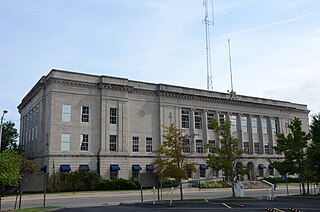
Muskogee County is a county located in the U.S. state of Oklahoma. As of the 2020 census, the population was 66,339. The county seat is Muskogee. The county and city were named for the Muscogee (Creek) Nation. The official spelling of the name was changed to Muskogee by the post office in 1900. Muskogee County is part of the Muskogee, OK micropolitan statistical area, which is included in the Tulsa-Muskogee-Bartlesville combined statistical area.
Porum is a town in Muskogee County, Oklahoma, United States. It was named for John Porum Davis, a rancher, Civil War veteran, and Cherokee Nation councilman from the Canadian District in Indian Territory. The community was first known as Porum Gap, which united with another village named Starvilla in 1905. The product of this union became the present town of Porum. The population was 727 at the 2010 census, an increase of 0.3 percent from the figure of 725 recorded in 2000.
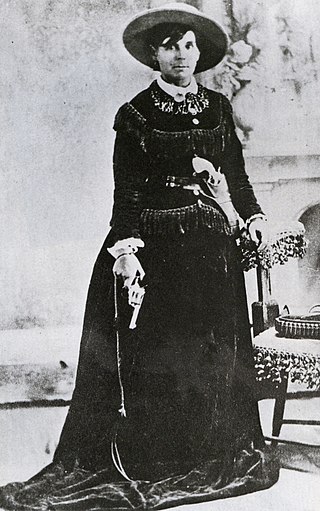
Myra Maybelle Shirley Reed Starr, better known as Belle Starr, was an American outlaw who gained national notoriety after her violent death.
John M. Larn was a western American lawman and later outlaw who, with gunfighter John Selman, operated a cattle rustling ring in Shackelford County, Texas, for over a year.

Commodore Perry Owens was an American lawman and gunfighter of the Old West. One of his many exploits was the Owens-Blevins Shootout in Arizona Territory during the Pleasant Valley War.
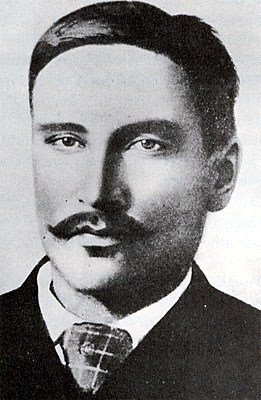
The Pleasant Valley War, sometimes called the Tonto Basin Feud, or Tonto Basin War, or Tewksbury-Graham Feud, was a range war fought in Pleasant Valley, Arizona in the years 1882–1892. The conflict involved two feuding families, the Grahams and the Tewksburys. The Grahams were ranchers, while the Tewksburys, who were part Native American, started their operations as cattle ranchers before branching out to sheep.

John Henry Selman was sometimes identified as an outlaw and sometimes a working lawman of the Old West. He is best known as the man who fatally shot John Wesley Hardin in the Acme Saloon in El Paso, Texas, on August 19, 1895.
The Jesse Evans Gang, also known as The Boys, was a gang of rustlers and robbers led by outlaw and gunman Jesse Evans, which lasted from 1876 until 1880. The gang was formed after Evans broke with the John Kinney Gang. After breaking away, he brought along with him Billy Morton, Frank Baker, Tom Hill, Dolly Graham, George Davis, Jim McDaniels, Buffalo Bill Spawn, Bob Martin, Manuel "Indian" Segovia and Nicholas Provencio.
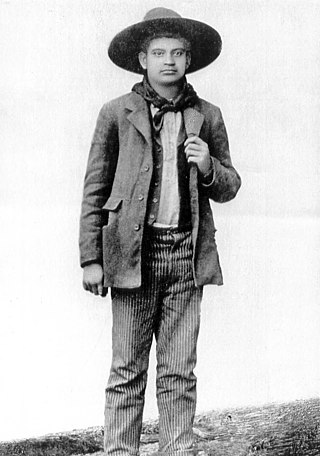
Crawford Goldsby, also known by the alias Cherokee Bill, was an American outlaw. Responsible for the murders of eight men, he and his gang terrorized the Indian Territory for over two years.
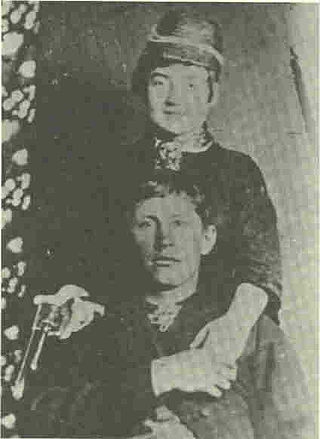
Jesse Evans was an American outlaw and gunman of the Old West, and the leader of the Jesse Evans Gang. He received some attention due to his disappearance in 1882, after which he was never seen or heard from again. Commentators speculated that Evans was living in Florida under the name Joe Hines in 1948, though no definitive proof was ever provided.
Charles "Pony Diehl" Ray was an Old West outlaw in the New Mexico Territory and Arizona Territory. He was accused by Wyatt Earp of having taken part in an attempt to kill his brother, Virgil Earp. Diehl was not tried due to a lack of evidence.

Nathaniel "Texas Jack" Reed was a 19th-century American outlaw responsible for many stagecoach, bank, and train robberies throughout the American Southwest during the 1880s and '90s. He acted on his own and also led a bandit gang, operating particularly in the Rocky Mountains and Indian Territory.
The Horrell brothers, sometimes referred to as the lawless Horrell boys, were five brothers from the Horrell family of Lampasas County, Texas, who were outlaws of the Old West, and who committed numerous murders over a five-year period before four of the brothers were killed in different incidents. The brothers are probably best known for the Horrell-Higgins feud, although it resulted in relatively few deaths compared to other feuds. However, starting in 1873, the brothers went on an ethnically motivated killing spree during which they killed a Hispanic lawman and a white lawman in New Mexico, killed 11 other Hispanic men, and wounded one Hispanic woman. The brothers had previously killed five lawmen in Texas.
John Pinckney Calhoun Higgins, better known as "Pink" Higgins, was a gunman and cowboy of the Old West. He is known to have killed 14 men in his lifetime.

Alonzo Van Oden was a Texas Ranger who was killed in the line of duty and was known for his bravery and dedication to his work.
Doublehead or Incalatanga, was one of the most feared warriors of the Cherokee during the Cherokee–American wars. Following the peace treaty at the Tellico Blockhouse in 1794, he served as one of the leaders of the Chickamauga Cherokee, and he was chosen as the leader of Chickamauga in 1802.
Thomas Starr was a Cherokee in the American West, who was declared an outlaw by his tribe in an internal conflict over treaties with the United States government. He was also involved in running whiskey into Indian Territory and rustling stock. Starr was the grandfather of Henry Starr and father in-law to Belle Starr, through her marriage to Sam Starr.

Feuds in the United States deals with the phenomena of historic blood feuding in the United States. These feuds have been numerous and some became quite vicious. Often, a conflict which may have started out as a rivalry between two individuals or families became further escalated into a clan-wide feud or a range war, involving dozens—or even hundreds—of participants. Below are listed some of the most notable blood feuds in United States history, most of which occurred in the Old West.
John Jackson Helm, was a lawman, cowboy, gunfighter, and inventor in the American Old West. He fought for the Confederacy during the Civil War, but worked as a lawman for the Union during Reconstruction. He was an active participant in the Sutton–Taylor feud in and about Dewitt County, Texas; and was killed in an ambush related to the feud and perpetrated by Jim Taylor and John Wesley Hardin.

Belle Starr's Daughter is a 1948 American Western film directed by Lesley Selander and starring George Montgomery, Rod Cameron and Ruth Roman.
References
- 1 2 3 4 5 6 7 8 "Coffeyville Dailly Journal". Newspaper.com. May 15, 1912
- 1 2 3 4 5 6 7 Thompson, Jerry (9 October 2020). "WRECKED LIVES AND LOST SOULS". HistoryNet . October 9, 2020
- 1 2 Porum Range War
- 1 2 Conley, Robert J. (2007). A Cherokee Encyclopedia. University of New Mexico Press. pp. 225. ISBN 978-0826339515
- 1 2 Mullins, Jonita (16 January 2021). "Three Forks History: Range war holdover of lawless frontier". Muskogee Phoenix . January 16, 2021
- ↑ Meier, Allison (3 April 2013). "Belle Starr the Bandit Queen: How a Southern Girl Became a Legendary Western Outlaw". Atlas Obscura . Retrieved 16 May 2018.
- ↑ The Bloody Porum Range War